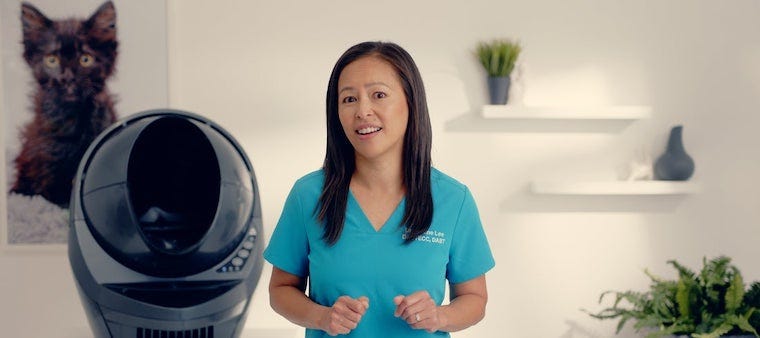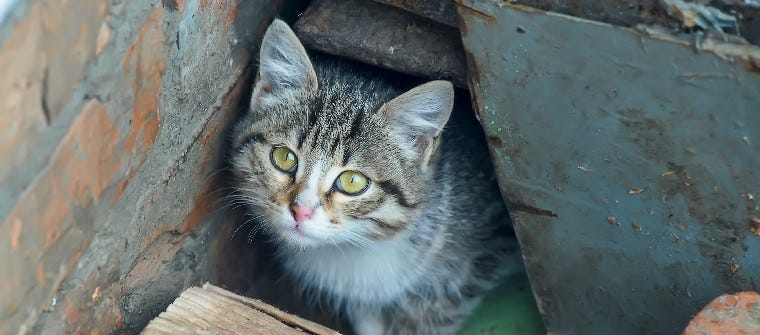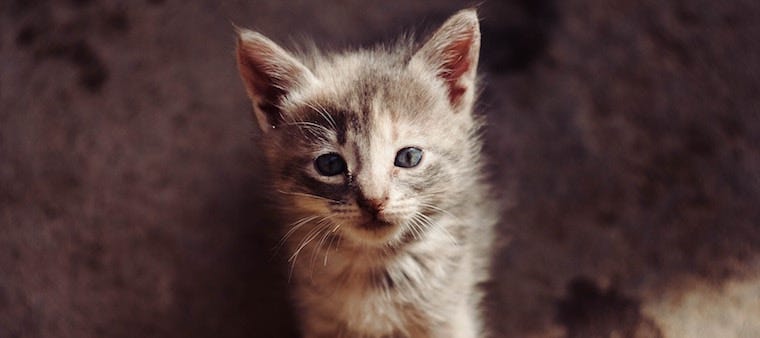In this two-part blog, Dr. Justine Lee, DACVECC, DABT reviews all you need to know about living with FeLV (feline leukemia), as well as the FeLV vaccine. Please make sure to check out part one first, where she reviewed what FeLV is, how it’s transmitted, which cats are at risk, what the clinical signs of feline leukemia are, and why all cats should be tested for their retrovirus status!
When it comes to feline leukemia (FeLV), you want to make sure your cats are tested and protected from this highly contagious, fatal retrovirus. That’s because the prognosis for a cat is poor once they start showing signs of FeLV, with an average survival time of only about 2.5 years.
Will my cat fight off FeLV?
Most cats diagnosed with FeLV become symptomatic and die of FeLV-associated complications of anemia, infection, or cancer. Their body can’t contain or fight off the retrovirus, and the virus replicates aggressively in their lymphoid tissue and bone marrow.
As an emergency veterinary specialist, I most commonly see this when a cat comes into the veterinary ER for difficulty breathing, only to be diagnosed with abnormal fluid in the chest cavity or a large cancerous tumor growing in front of the heart (e.g., mediastinal mass). Sometimes, complications arise from a severe, life-threatening anemia due to FeLV attacking the bone marrow. Regardless, once clinical signs of FeLV develop, the prognosis is grave, and I’m often recommending humane euthanasia.
Less commonly, cats can be initially infected with FeLV and their immune system can fight it off. This can result in an “aviremic” state, where the virus isn’t in their body, so they are less likely to develop FeLV-related medical problems or shed the virus. This is less common, and when I do see it, it’s typically from a kitten that seroconverts to a negative FeLV state later.
How can I prevent my cat from getting FeLV?
Being that FeLV is often fatal, you want to prevent your cat from being exposed to this virus to begin with! The best way to prevent your cat from getting FeLV is by screening and testing all cats in your household at your veterinarian. Before you bring a new cat into the household, this common FeLV/FIV test is a must do. If your cats are negative, great!
Second, keep ALL your cats indoors. If you only let one of your five cats out, you’re still exposing the other four cats to infection! Keeping all your cats indoors prevents fighting with a stray neighborhood cat that may carry it. Need proof?
In a veterinary study looking at cats presenting to their veterinarian with skin infections or abscesses, more than 19% of cats were FeLV or FIV positive at the time of presentation. That’s 1 out of every 5 cats coming in for cat scratches or skin wounds! Cats develop abscesses when they fight with other cats—after all, their teeth and claws carry a lot of bacteria, resulting in a pus-filled abscess under the skin. If your cat has a skin abscess, not only does this require sedation, minor surgery, and antibiotics, but it also requires a FeLV/FIV blood test 30 and/or 60 days after the initial exposure of the retroviruses. This is to make sure your cat didn’t catch these deadly viruses. And based on the data, there’s potentially a 1 in 5 chance your cat may get FeLV from this!
The FeLV vaccine
The next way of protecting your cat? Keeping your cat vaccinated with the FeLV vaccine. The FeLV vaccine is a must for all kittens, as we want to make sure we protect kittens early—especially when their immune system is more immature due to youth. That said, while the FeLV vaccine is safe, it’s considered a non-core vaccine—in other words, not all adult cats need it as they age and mature. Also, keep in mind that the FeLV vaccine is not 100% protective (as compared to other feline vaccines, which are almost 99% effective). The best way of protecting your cat is also by minimizing exposure to FeLV-infected cats.
So, when do I recommend the FeLV vaccine? I recommend the FeLV vaccine in these cases:
- Kittens
- Cats that go outside
- Cats that live with cats that go outside
- If you foster cats
- Cats living with FeLV+ cats
- If you have a lot of environmental turnover of cats (e.g., shelter work, etc.)
- Cats living in shelters or group housing (e.g., catteries)
Know that vaccinating your cat for FeLV does not affect the blood test for your cat. (This is different from the FIV vaccine, which does make your cat test positive for FIV despite protecting their immune system; hence, why the FIV vaccine is not commonly recommended or used.) That said, cats ideally should be blood tested for FeLV prior so we know if your cat was exposed. If your cat already has tested positive for FeLV, there is no benefit of getting the vaccine.
My cat was just diagnosed with FeLV. What should I do?
If your cat was just diagnosed with FeLV, first, my heart goes out to you. It’s a devastating disease and can be very stressful to deal with.
Cats diagnosed with FeLV should be kept indoors only to prevent the spread to other cats. If you have other cats in the household, ideally, you should isolate the FeLV+ cat from the other cats. This is to maximize all your cats’ health and to prevent spread of this virus to your other cats—and to prevent your cats from spreading infections to your now immunosuppressed FeLV+ cat. Your other cats in the household should also be tested for FeLV to make sure they are negative. Depending on when your FeLV+ cat was diagnosed, I typically do this at the time of diagnosis and follow up a few months later with a second blood test in all the remaining cats.
If you do have other cats in the household, I also recommend disinfection of the environment. Thankfully, FeLV as a virus isn’t super hardy outside of your cat’s body—it’s estimated to only survive for a few hours outside of a cat’s body. That said, I recommend disinfecting what you can, especially water and food bowls, kitty litter boxes, etc., with a dilute bleach solution or disinfectant. Then, isolate your FeLV + cat from your other cats to prevent exposure.
Keeping your FeLV+ cat healthy
If your cat was diagnosed with FeLV, you want to keep your cat as healthy as possible. This includes physical examinations 2-4x a year, preventative medication, and blood work monitoring (to make sure they aren’t getting anemic or getting an infection). Keeping your cat as healthy as possible once they are diagnosed with FeLV is really important, since there’s no cure for FeLV. While certain medications like steroids, anti-virals, and interferon have been evaluated for the treatment of FeLV, none have been very successful.
Most importantly, help minimize the chances of your cat developing secondary infections, since FeLV cats have a weaker immune system. This includes keeping your cat inside, keeping your cat on preventative medications, isolating your cat from other cats in the household, and keeping a close eye on your cat. It also means no fostering or cats/kittens or introducing new pets into the household, as we don’t want them catching anything.
You’ll also want to monitor your FeLV+ cat carefully. If you notice any clinical signs—like pale gums, not eating, difficulty breathing, and weight loss—you want to seek veterinary attention immediately for treatment, since your cat will need more care for their weakened immune system. There are some treatments for specific problems—like antibiotics for an infection, fluids under the skin for dehydration, appetite stimulants for loss of appetite, and blood transfusions for anemia—but again, there is no direct cure for FeLV.
What’s the prognosis for FeLV? How long will my cat live with FeLV?
Unfortunately, the prognosis for a cat with FeLV is poor. This virus will result in the quick demise of your cat. Personally, I’ve never seen a cat live past 5 years of age with it, as most FeLV+ cats can only live with this for 2-3 years after the time of diagnosis. (This is different from how long your cat can live with FIV, which can potentially be a decade or more!)
When in doubt, talk to your veterinarian about living with FeLV. And try to keep all your feline family members as safe as possible!





